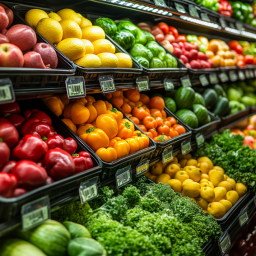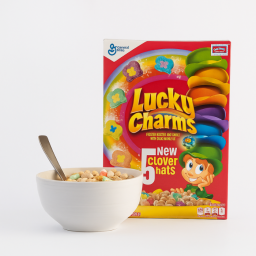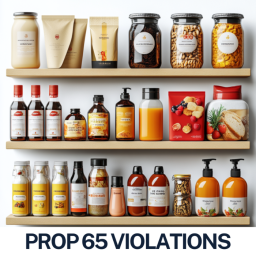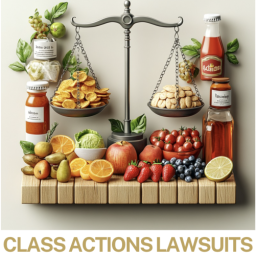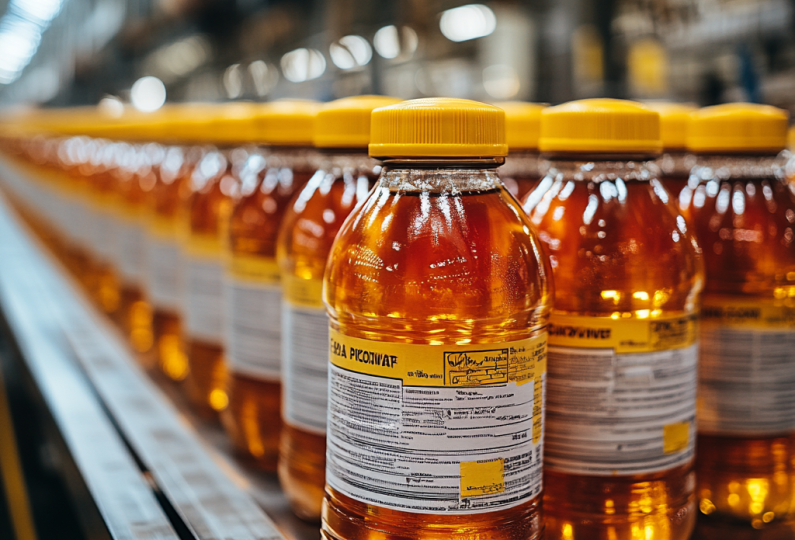
In the latest reminder of the critical importance of stringent quality control in juice production, Walker’s Wine Juice LLC has initiated a voluntary recall of its pumpkin juice due to potential contamination with Clostridium botulinum, the bacterium responsible for botulism—a rare but potentially fatal illness. This recall affects products distributed both through the company’s retail store in New York and to various commercial wineries across multiple states, including Illinois, Indiana, Kansas, Kentucky, Maine, Michigan, Minnesota, New Jersey, Ohio, Pennsylvania, and Wisconsin.
The recall was prompted after an inspection by the New York State Department of Agriculture and Markets revealed that the pumpkin juice’s pH levels were too high for the company’s “hot fill” process, indicating that an adequate kill step for microbiological hazards may have been lacking. Although no illnesses have been reported to date, the potential presence of Clostridium botulinum poses significant health risks, including general weakness, dizziness, double vision, and difficulty speaking or swallowing.
This incident underscores the necessity for juice manufacturers to rigorously monitor and control processing parameters, particularly pH levels, to prevent microbial contamination. Implementing comprehensive Hazard Analysis and Critical Control Points (HACCP) plans, conducting regular equipment validations, and ensuring staff are adequately trained in food safety protocols are essential steps in mitigating such risks.
Fruit juice recalls are more than headline-worthy events — they are operational, financial, and legal risks that can threaten a company’s reputation and bottom line. Whether the issue is elevated arsenic levels, bacterial contamination, or a breakdown in processing equipment, every recall underscores a single truth: proactive compliance and risk management are non-negotiable in the food and beverage industry.
This guide breaks down the top causes of juice recalls, key lessons from recent FDA actions, and legal strategies your company can implement to prevent costly enforcement and litigation.

Understanding the Leading Causes of Recalls
Most fruit juice recalls fall into a few recurring categories, each rooted in preventable failures. Here’s what your production, quality, and legal teams should be watching for:
Heavy Metal Contamination
In 2024, more than 133,000 cases of apple juice were recalled after testing revealed elevated levels of inorganic arsenic. The affected brands included Great Value (Walmart) and Nature’s Nectar (Aldi). While no illnesses were reported, the reputational damage and scrutiny from regulators were significant.
Best Practice: Implement batch-level testing for arsenic, lead, and cadmium, especially in apple-based products. Audit suppliers regularly, and confirm compliance with the FDA’s Toxic Elements Program.

Microbial Contamination
Also in 2024, Happy Moose Juice issued a voluntary recall after tests identified Salmonella, Listeria monocytogenes, and E. coli in certain juice blends. The contamination was traced to a failure in the company’s High Pressure Processing (HPP) system — a critical kill step for cold-pressed beverages.
Best Practice: Validate HPP machinery regularly. Document maintenance, train operators on early-warning signs of process failure, and ensure your Juice HACCP Plan directly addresses cold-chain vulnerabilities.

Foreign Material Contamination
In 2000, Minute Maid Frozen Juice Bars were recalled nationwide after plastic fragments were found in the product. These types of recalls, though less common, are often tied to equipment malfunctions or inadequate line inspections.
Best Practice: Implement foreign object detection protocols, including X-ray and metal detection. Ensure maintenance logs and production line checks are consistent and auditable. Under 21 CFR § 7.40, even trace contamination can trigger a recall due to adulteration.

Processing and Acidification Failures
In 2010, Juices Incorporated recalled carrot-beet juice products due to botulism risks caused by improper acidification. The recall triggered stricter FDA oversight for acidified juice blends and reinforced the need for precise pH control.
Best Practice: Require batch pH testing of all acidified products. Maintain logs of pH meter calibration and corrective actions. Cross-train QA teams to spot potential pH drift during formulation or fill.

Lessons from Past Recalls: Patterns and Pitfalls
Across these cases, a clear pattern emerges: most recalls result from internal oversights, not malicious conduct. Missed testing, unvalidated equipment, poor interdepartmental communication, and incomplete documentation are common threads.
Legal exposure often follows not only from the product defect, but from slow response times, regulatory reporting delays, and inadequate traceability once issues are discovered.
At Juris Law Group, P.C. we routinely advise beverage companies in real-time during recalls. We’ve seen firsthand that the first 24–48 hours after discovery are critical to controlling exposure, shaping regulatory dialogue, and preserving brand trust.

Regulatory Frameworks Every Juice Manufacturer Should Know
To operate safely and legally, your company must comply with several overlapping federal rules, including:
- Juice HACCP Rule (21 CFR Part 120)
Requires written hazard analysis and control plans tailored to juice production.
- Food Safety Modernization Act (FSMA)
Mandates preventive controls and gives the FDA authority to mandate recalls for high-risk products.
- FDA’s Toxic Elements Guidance
Sets action levels for arsenic, lead, cadmium, and mercury in juices.
- FDCA Sections 402–403
Governs adulteration (e.g., foreign materials) and misbranding (e.g., misleading labeling).
Pro Tip: An outdated HACCP plan is a red flag to regulators. Schedule annual audits with counsel and QA professionals to ensure alignment with current enforcement trends and supply chain risks.

Preparing for the Unthinkable: Your Legal Recall Playbook
Even companies with excellent safety programs should have a recall response plan on file — not just for the FDA, but for your legal defense and insurance carrier. At a minimum, your protocol should include:
- Internal Escalation Plan: Define who leads the recall process, who notifies the FDA, and how cross-functional teams will collaborate.
- Retailer Communication Templates: Pre-drafted statements ready to send to distributors, brokers, and retailers within hours.
- Regulatory Reporting Map: Identify the thresholds for voluntary recall vs. mandatory recall vs. market withdrawal.
- Recall Insurance Review: Confirm your policy covers voluntary and FDA-mandated recalls and outlines the claim submission process clearly.

Final Takeaway: Prevention Is the Strongest Legal Defense
Recalls are a persistent risk in the juice industry — and the bar for regulatory compliance is rising. But companies that embrace food safety culture, maintain rigorous documentation, and prepare legally for the unexpected are best positioned to protect both consumers and the business.
At Juris Law Group, P.C. we help juice and beverage manufacturers navigate compliance, develop recall playbooks, and defend against enforcement or litigation. Whether you’re updating your HACCP plan or responding to a product issue, our team offers practical, business-first counsel tailored to the food and beverage industry.

Frequently Asked Questions (FAQ)
1. What should a fruit juice company do immediately after discovering a potential safety issue?
Initiate a product hold, conduct a rapid risk assessment, and activate your internal recall team. Notify your legal counsel and, if applicable, file with the FDA through the Reportable Food Registry. Begin drafting notices to affected distributors or retailers.
2. How often should juice companies test for contaminants like arsenic or lead?
Testing frequency depends on product type and supplier risk. Apple juice and imported raw materials warrant quarterly or more frequent testing. Testing protocols should align with the FDA’s Toxic Elements Program and supplier verification policies.
3. What are the consequences of failing to comply with Juice HACCP requirements?
Penalties may include FDA Warning Letters, mandatory recalls, product seizures, civil fines, or—in severe cases—criminal enforcement. Noncompliance can also void insurance coverage and lead to private lawsuits.
4. Does every recall lead to litigation?
No. However, Class I recalls (those involving serious health risks) increase the likelihood of lawsuits, especially if consumers are injured or if the company’s response appears slow or negligent.
5. What documents should every juice company keep on file in case of a recall?
Maintain current HACCP plans, batch production records, pH logs, test results, supplier indemnification agreements, and a recall procedure manual. These form the foundation of your legal and regulatory defense.

Need support with recall strategy or FDA compliance? Contact Juris Law Group, P.C. for proactive, industry-specific legal guidance that protects your brand and bottom line.

